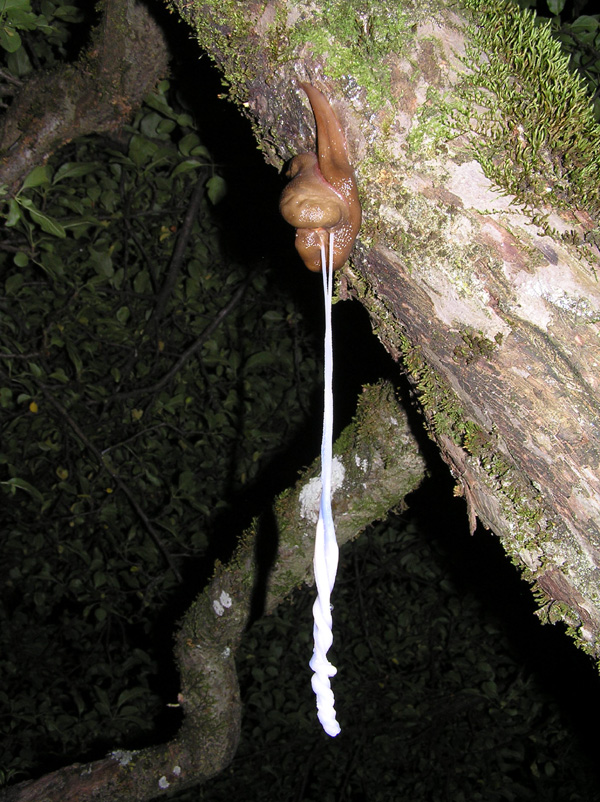L.corsicus-Gruppe
© Clemens M. Brandstetter
 (Abstract from Nitz & al. 2010): Slugs of the genus Limax (Gastropoda: Stylommatophora) show a highly complicated genital system and reproductive behaviour probably triggering radiation and speciation. Pre-studies have revealed two so far largely undescribed species groups of Limax in Corsica. In order to clear up the phylogeny and evolutionary history of these radiations, we used a combination of molecular techniques and morphological characters. The two independent species groups of Corsican Limax species are monophyletic, and consist of six to ten species each, most of them new to science. The first species group, the endemic Wolterstorffi-group, can be differentiated by COI-Sequences, whereas COI-sequences fail to discriminate species of the Corsicus-group, which also has representatives in the Apennine Peninsula. This pattern suggests a much younger radiation of the Corsicus-group. Two hitherto unrecognized species on the adjacent islands of Elba and Capraia are described in an appendix.
(Abstract from Nitz & al. 2010): Slugs of the genus Limax (Gastropoda: Stylommatophora) show a highly complicated genital system and reproductive behaviour probably triggering radiation and speciation. Pre-studies have revealed two so far largely undescribed species groups of Limax in Corsica. In order to clear up the phylogeny and evolutionary history of these radiations, we used a combination of molecular techniques and morphological characters. The two independent species groups of Corsican Limax species are monophyletic, and consist of six to ten species each, most of them new to science. The first species group, the endemic Wolterstorffi-group, can be differentiated by COI-Sequences, whereas COI-sequences fail to discriminate species of the Corsicus-group, which also has representatives in the Apennine Peninsula. This pattern suggests a much younger radiation of the Corsicus-group. Two hitherto unrecognized species on the adjacent islands of Elba and Capraia are described in an appendix.
Das Vorkommen dieser Gruppe nach Ulrich Gerhardt ist auf die grossen Inseln Korsika und Sardinien, die Inseln des Toskanischen Archipels und Mittel- bis Süditalien inklusive der Insel Ischia begrenzt. Die Paarung erfolgt ohne Schleimfaden, die Penes sind lang bis extrem lang (Weltrekord: 92 cm), das Sperma wird während der Paarung in die Penisspitzen gedrückt. Die Sohle ist dreistreifig, zart rötlich bis orangerot, auch der Schleim kann orangefarbig sein. Bisher nur in Wäldern beobachtet. Limax corsicus wurde nach seinem ersten Fundpunkt beschrieben.
 Questo gruppo si accoppia senza filo di bava in posizione basale e tipica di un „X“. Il suo pene e normalmente lungo, della provincia di Siena conosciamo il primato mondiale di 92 cm. L’accoppiamento dura qualche ore, perchè lo sperma dev’essere pressato nei tubi dei peni.
Questo gruppo si accoppia senza filo di bava in posizione basale e tipica di un „X“. Il suo pene e normalmente lungo, della provincia di Siena conosciamo il primato mondiale di 92 cm. L’accoppiamento dura qualche ore, perchè lo sperma dev’essere pressato nei tubi dei peni.

Die Paarung erfolgt ohne Schleimfaden.
Literatur:
Nitz B., Falkner G. & G. Haszprunar 2010: Inferring Multiple Corsican Limax (Pulmonata: Limacidae) Radiations: A Combined Approach Using Morphology and Molecules. – M. Glaubrecht (ed.), Evolution in Action, Springer-Verlag Berlin Heidelberg.
